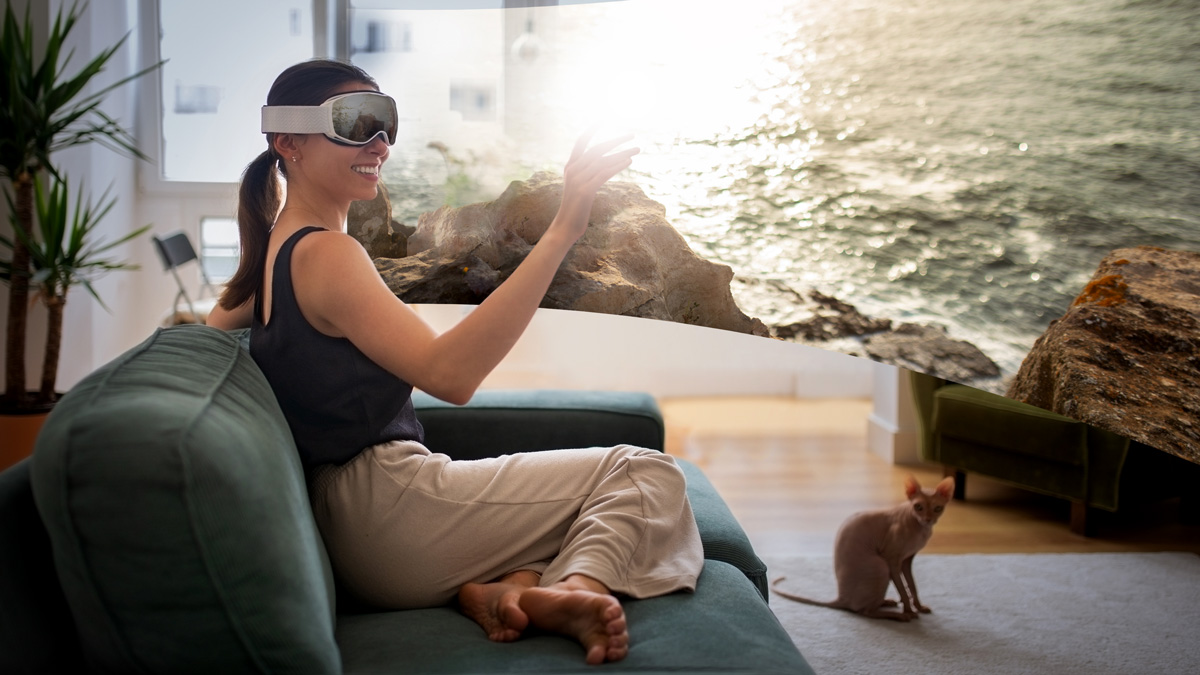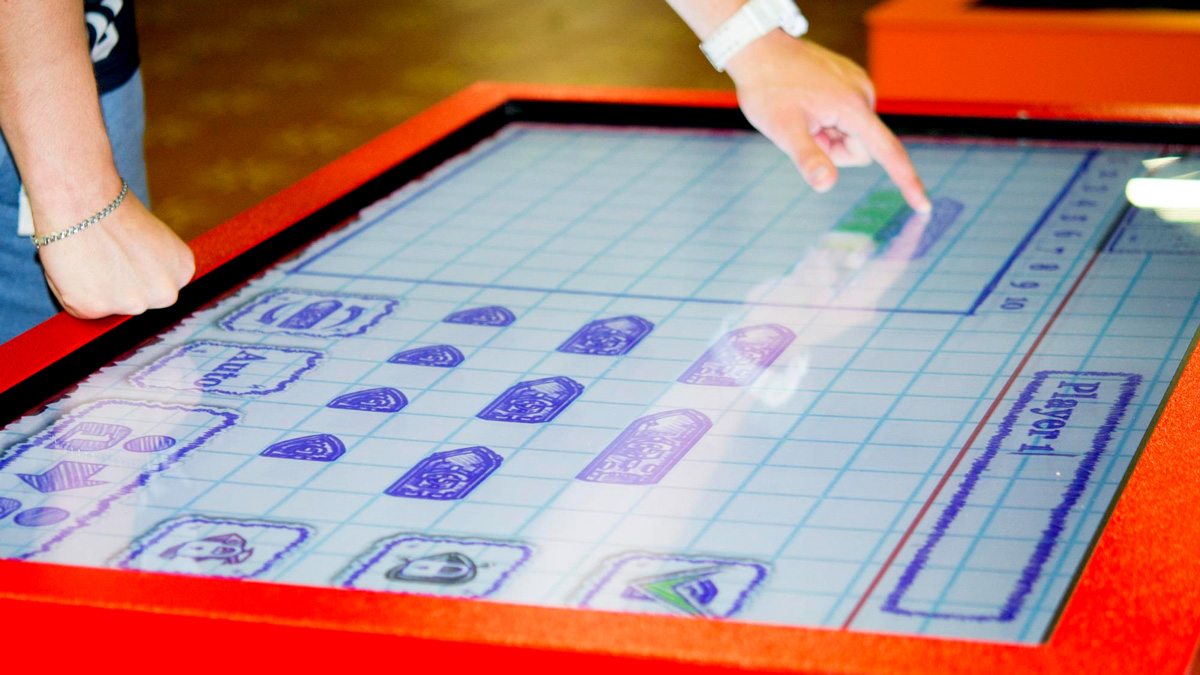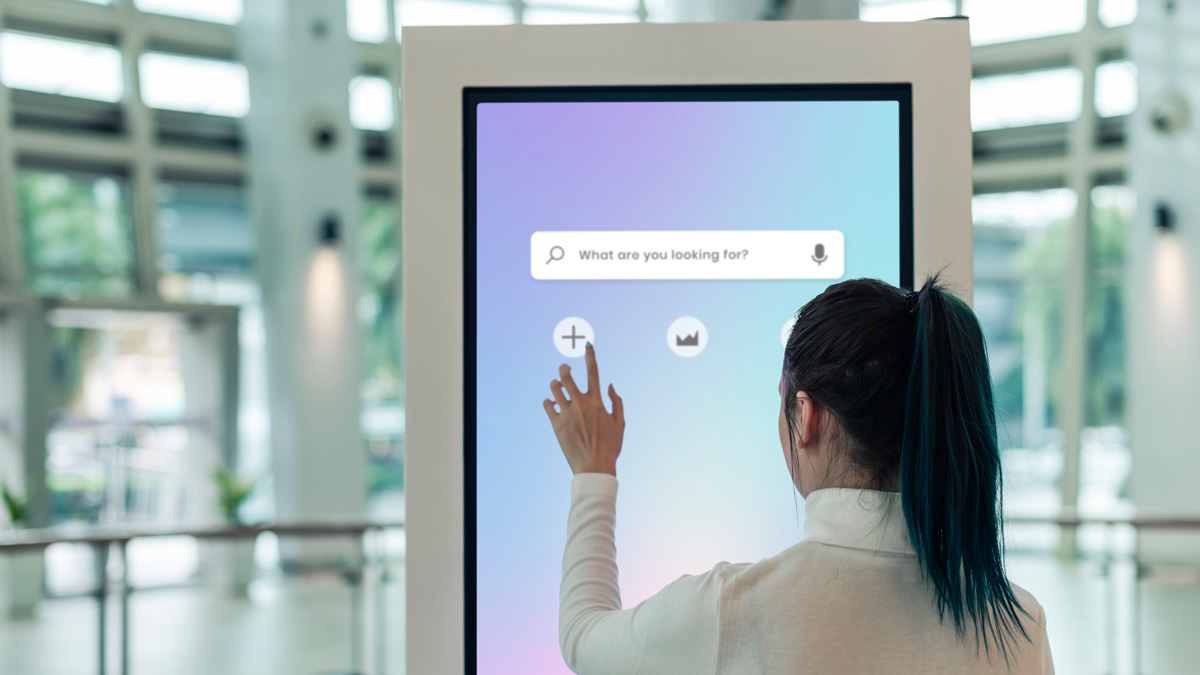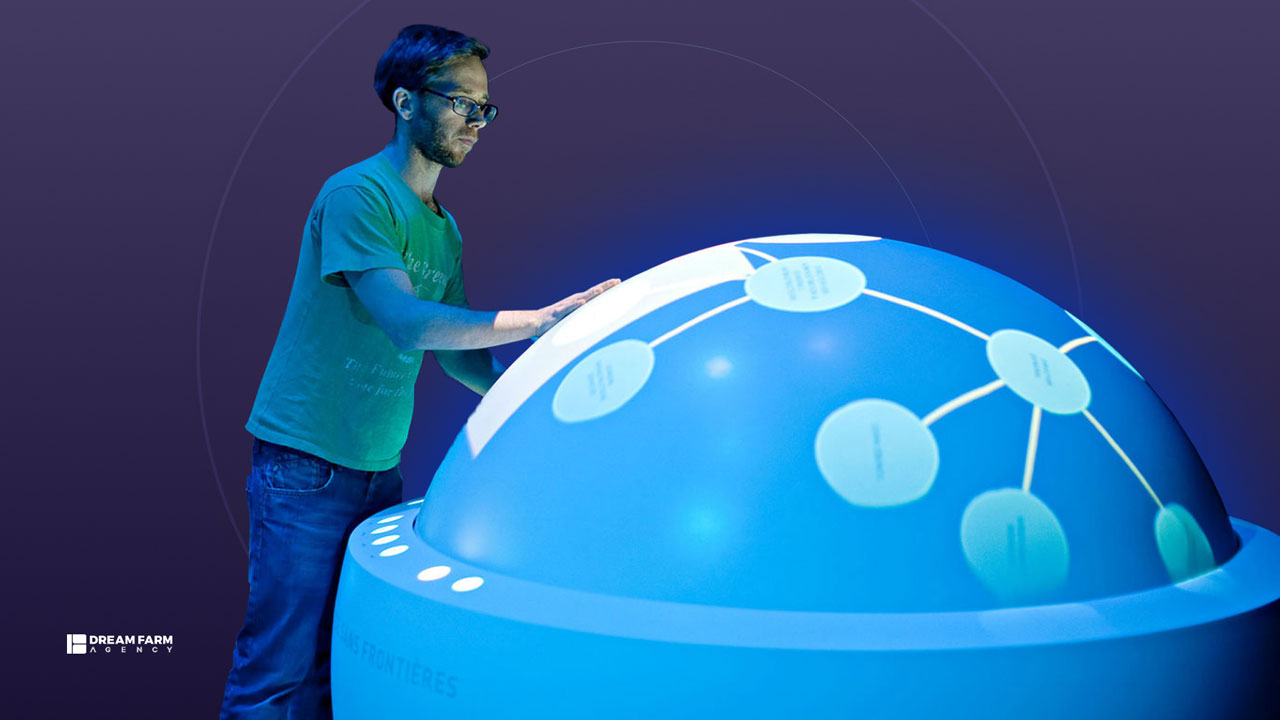
- What Is an Interactive Exhibition?
- The Top Interactive Exhibition Ideas
- Virtual Reality (VR)
- Augmented Reality (AR)
- 360-Degree Tours
- Projection-Mapping
- Interactive Art Installations
- Interactive AR sandbox
- Artificial Intelligence interactive display
- Dream Farm Agency: Specialized in Innovative Interactive Exhibits
Interactive exhibition ideas help you draw your target audiences closer and transform passive observation into active engagement. The interactive features not only entertain visitors but also educate, making complex subjects easier to grasp while boosting deeper connections between your audience and your content.
In this blog post, we discover the top interactive exhibition definitions, ideas, and examples that can inspire you to transform your exhibition into a captivating and memorable experience for all visitors.
What Is an Interactive Exhibition?
Interactivity in exhibitions involves creating engaging, participatory experiences that encourage visitors to interact directly with the exhibits. Integrating interactivity into your exhibitions can transform them from static displays into dynamic, engaging experiences that captivate and educate your audience.
Interactive exhibition ideas can include touch screens, virtual reality (VR) setups, augmented reality (AR) features, interactive displays, and educational games. These elements transform a passive viewing experience into an active learning journey, making the exhibition more memorable and impactful.
By carefully planning and implementing interactive elements, you can create memorable exhibitions that resonate with visitors long after they’ve left. Now, let’s explore various interactive exhibition ideas and real-world examples and uncover their exciting possibilities and potential to create unforgettable visitor experiences.
The Top Interactive Exhibition Ideas
Interactive exhibition ideas can significantly enhance visitor engagement and create memorable experiences. Here are some innovative ideas that can make your exhibits stand out.
Interactive Walls and Tables
Interactive walls and tables are a dynamic way to engage your audience. Interactive walls feature touch-sensitive displays that allow visitors to interact with content through touch, swipe, and pinch-to-zoom gestures. These installations are redefining interactions with physical spaces, making exhibitions more engaging.
On the other hand, interactive tables equipped with multi-touch surfaces enable multiple users to explore digital content simultaneously. Imagine visitors discovering maps, timelines, or games together, fostering a collaborative and educational environment.

Virtual Reality (VR)
Virtual reality (VR) can turn your exhibition into an unforgettable journey. VR allows users to explore real or fictional worlds through immersive brand experiences. Visitors can fly over landscapes, walk through historical eras, or venture into futuristic realms, all within a dedicated space.
VR, as one of the most popular interactive exhibition ideas, enriches the exhibition by portraying stories and histories in ways no other medium can. This technology provides an unparalleled way to captivate audiences, making them feel like active participants in the narrative.
For instance, the Peterson Automotive Museum in Los Angeles collaborated with Microsoft HoloLens to create a VR experience featuring the classic Ford GT40.
Visitors could interact with the car up close and compare it to a modern Ford GT, enhancing the narrative with spatial audio and surround sound. This integration of real and virtual elements brought the exhibit to life, offering an engaging and educational experience.
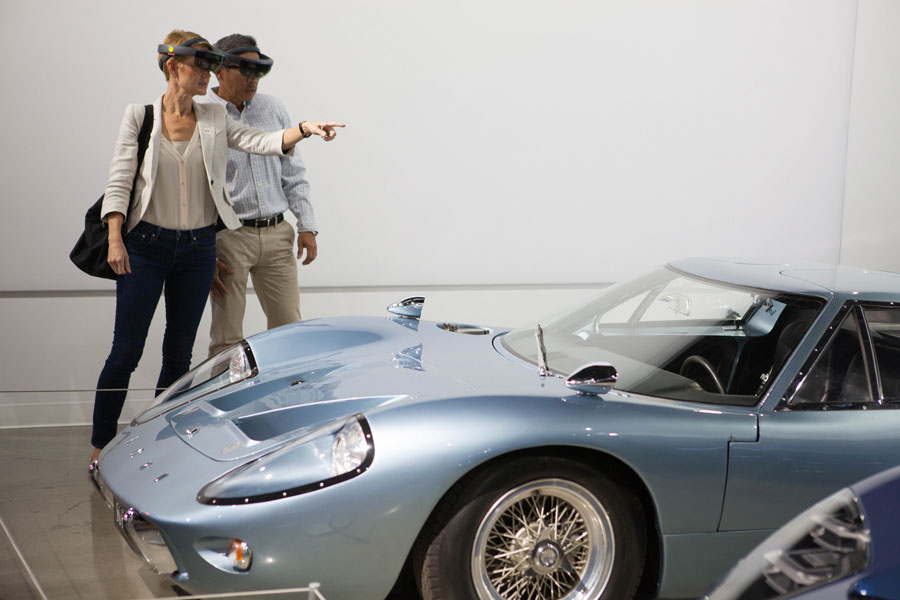
Augmented Reality (AR)
Augmented reality (AR) can bring a new dimension to your exhibitions, especially at beauty and cosmetics fairs. Virtual mirrors utilizing AR, AI, and VR let customers experiment with different looks in real-time without applying makeup.
Moreover, this interactive exhibit tool encourages visitors to try new products and enhances their overall experience. AR can be used in various industries to provide interactive guides, historical re-creations, and enhanced product demonstrations.
New Zealand’s Otago Museum embraced AR with their exhibition “Plunge,” a fully augmented reality experience. Using smartphone cameras, visitors could see virtual 3D sea creatures layered over real-life surroundings.
Designed by Max Mollison, this AR exhibition complemented the museum’s “Sea Monsters: Prehistoric Ocean Predators” exhibit, making the visit interactive and engaging for the public.

360-Degree Tours
A 360-degree tour is an immersive experience that allows users to explore a space in all directions using digital technology. It provides a panoramic view, enabling viewers to navigate and interact with the environment as if they were physically present.
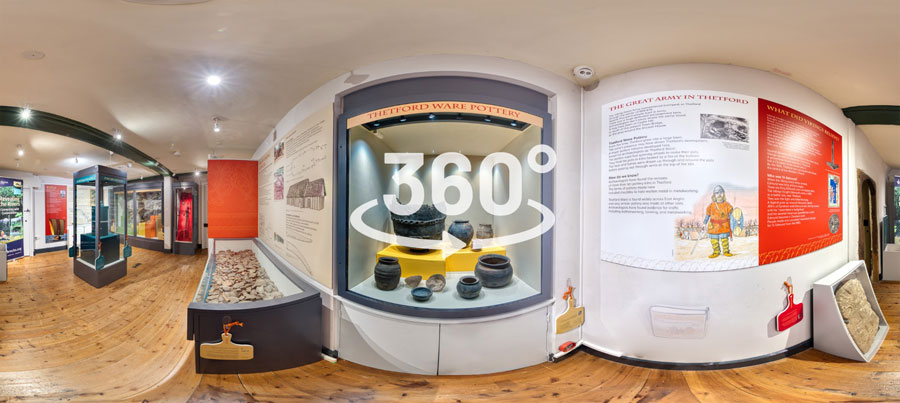
In other words, 360-degree tours offer a virtual experience of otherwise inaccessible locations or historical sites. These interactive exhibit tours allow visitors to explore exhibitions as if they were physically present, making the exhibits accessible to a broader audience.
This technology is particularly useful for museums, historical sites, and galleries, enabling them to reach a global audience and offer virtual access to their collections.
For example, Vortex Visual Ltd. transformed the Ancient House Museum’s “Vikings on your Doorstep” exhibition into a 360-degree virtual tour. This online resource enables visitors to explore the exhibition from anywhere, ensuring that the content remains accessible even after the physical exhibition has ended.
Want to learn more? Check out our portfolio: Villa 360-degree Tour
you can try it here:
Projection-Mapping
Projection mapping transforms static objects into dynamic, interactive exhibits by projecting images or animations onto surfaces such as walls or objects. This technology creates immersive environments where visitors can interact with projected elements, enhancing storytelling and visual impact.
Commissioned by the Hungarian National Museum, the interactive installation brings historic Hungarian fabric patterns to life. Visitors use touch screens to select from different patterns, which are then animated and projected onto a central cylinder.
Touch interaction allows users to manipulate the patterns, seeing them grow and change in real time, creating a visually engaging and educational experience.

Interactive Art Installations
Interactive art installations invite viewers to participate actively, blurring the line between observer and creator. These installations often utilize technology to create immersive environments where audience actions influence the artwork itself, fostering a deeper connection and dialogue between art and viewer.
“Rain Room” is a renowned interactive art installation that enables visitors to walk through a simulated rain shower without getting wet. Using motion sensors, the installation detects the presence of individuals and creates a dry zone around them, offering an uncanny experience of controlling rain.
This innovative use of technology challenges perceptions of nature and human interaction, creating a surreal yet compelling experience that has captivated audiences globally.
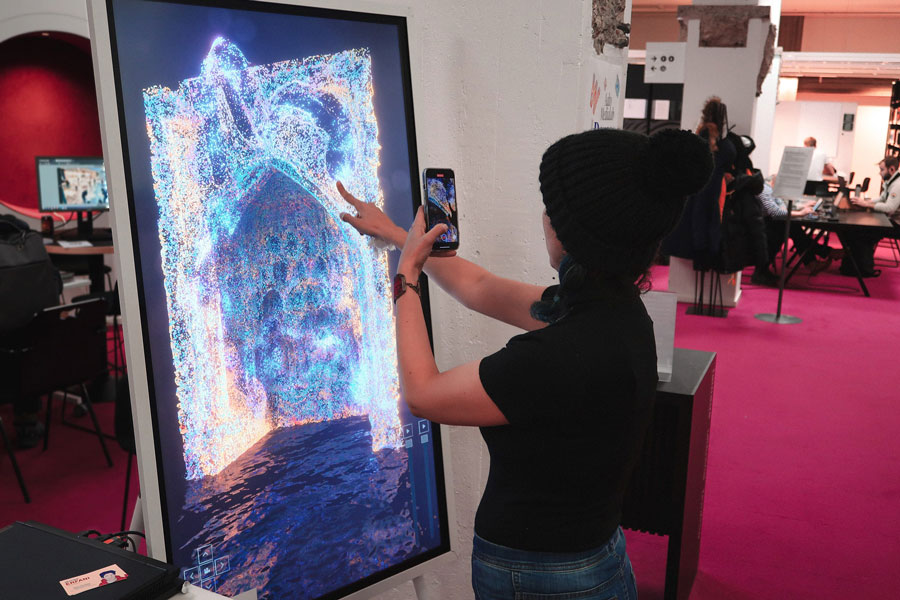
Interactive AR sandbox
An interactive sandbox like iSandBOX revolutionizes traditional sandplay by merging it with augmented reality (AR). This technology transforms a simple sand surface into a vibrant 3D interactive playground.
Visitors can manipulate the sand to create landscapes, historical scenes, or dynamic environments that respond in real-time to their movements. This hands-on experience appeals to all ages, encouraging exploration and creativity in a tactile and visually stimulating way.
iSandBOX enhances traditional sand play by using interactive AR on the sand surface. By shaping the sand, visitors can create virtual rivers and mountains or change historical settings, fostering an immersive learning environment.
This interactive exhibition idea can entertain and educate, making it ideal for museums, educational centers, or themed attractions seeking to engage visitors through sensory experiences.
Artificial Intelligence interactive display
AI demonstrators are pivotal in making complex technologies like neural networks understandable and tangible for visitors. These interactive exhibits showcase how artificial intelligence (AI) works in real-time, demonstrating its practical applications in engaging ways.
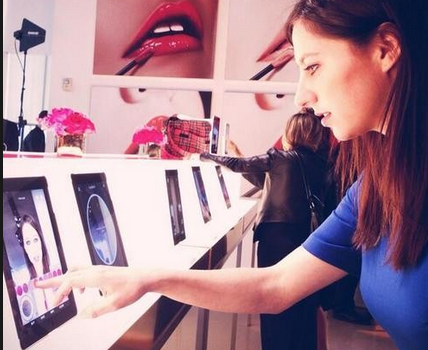
Dream Farm Agency: Specialized in Innovative Interactive Exhibits
As we conclude our exploration of interactive exhibition ideas, it’s clear that embracing technology can transform your interactive exhibits into dynamic and engaging experiences that leave a lasting impact on visitors. However, a good idea alone isn’t enough. Testing and demoing solutions can provide valuable insights, ensuring interactivity enhances rather than overwhelms the exhibit.
At Immexive creative company, we specialize in bringing these concepts to life through our diverse range of services. Whether you’re looking to enhance your exhibition with captivating 3D animations that visualize complex interactive exhibition ideas, create memorable brand mascots that engage with visitors, or integrate multimedia art that combines digital and physical elements, we’re here to help you innovate and captivate your audience.
Our team understands the importance of exhibit design in creating spaces that not only showcase your content effectively but also engage visitors through interactive storytelling. From ideation to implementation, we make sure every part of your interactive exhibition meets your vision and goals.
Browse our portfolio to see how our expertise in 3D animation, brand mascots, and Multimedia Art can elevate your next interactive exhibition. Contact us today to start planning your immersive journey into the world of interactive exhibition experiences that engage, educate, and inspire.

Fareena
